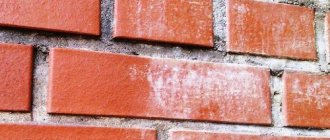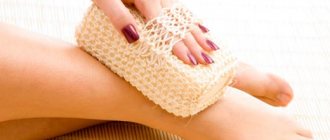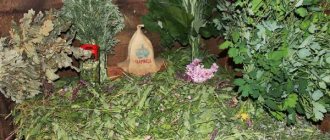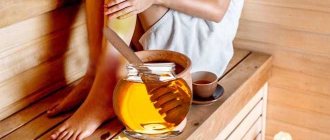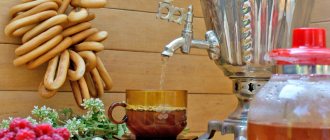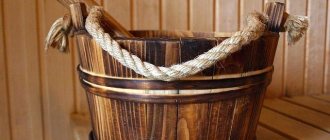Garlic…
Chinese scientists from the National Center for Disease Control of Qiangsu Province found that garlic halves the risk of developing lung cancer in a person, even though he smokes. Scientists came to this conclusion after surveying 1.5 thousand cancer patients and 4.5 thousand healthy people. During the survey, volunteers were asked about their diet, bad habits and daily routine. The results showed that participants who consumed garlic at least twice a week had half the risk of developing lung cancer (44%). It turned out that even if the subjects smoked, the effect was still present in 30% of cases. However, it is not yet known whether garlic will retain the same beneficial properties after heat treatment and other types of preparation.
Garlic in the bath
Garlic in a bath, despite its “harshness,” is very appropriate. If we are talking about a bath for health. Of course, it is better to use garlic in a bath only in a family bath, since in a public bath your action will be misinterpreted. For what purpose is cheskok used? Firstly, to maintain good health. Garlic has always been considered a universal remedy that cures everything from colds to plague. It is an excellent source of manganese, vitamin B6, vitamin C and selenium. Garlic has properties that help our heart and liver: 1. good for blood and circulation 2. helps stimulate the immune system 3. helps reduce “bad” cholesterol 4. increases metabolism 5. helps better absorb iron 6. serves as a cancer prevention (includes in the top 10 best anti-cancer products) 7. fights bacteria and viruses 8. helps remove warts 9. treats toothache. Secondly, as a remedy: 1. For colds. Chop a clove of garlic and add a little hot water. Let sit for 5 minutes. Strain and drink the decoction. This is a natural cough syrup. During cold and flu season, eat 3 raw garlic cloves daily to prevent illness. 2. For acne. Cut a clove of garlic in half and rub over the affected areas of the skin. Carry out the procedure regularly and your skin will become clear. 3. About herpes. Cut a clove of garlic in half and rub on the sore area. This may cause discomfort, but it is as effective as expensive pharmaceutical products. 4. Treatment for foot fungus. Throw a couple of crushed garlic cloves into hot water. Let it brew a little. Pour the resulting liquid into a foot bath and soak your feet for half an hour. Thirdly, as a drug for controlling insects indoors and even garden pests: 1. Using a garlic-based soap spray gives good results in the fight against gypsy moths, which infect apple trees. It's quick and easy to make, it's economical, non-toxic to the environment and our bodies - and it works! Soap has been used for centuries as a universal pesticide. It destroys insect cell membranes and kills pests. The trick is not to use too much of it, otherwise it will kill the plant along with the pests. Grate the laundry soap and add water to obtain concentrated liquid soap. To prepare the solution, take 1-2 tablespoons of liquid soap per 1 liter of water. Chop 1-2 cloves of garlic and add boiling water. Cover and let sit overnight. Strain in the morning. Pour soap and garlic solutions into a spray bottle. In dry weather, treat the plants. The solution deteriorates quickly, so you need to prepare it as needed. 2. Repellent against mosquitoes and other insects. Everyone knows that the best remedy for vampires is garlic. That's why mosquitoes are afraid of garlic. You can rub garlic on your skin to repel mosquitoes, but if that's not your thing, you can place peeled garlic cloves where the mosquitoes have appeared. Fourthly, as a household product. 1. Glass repair. If small cracks appear on the glass, you can squeeze garlic juice onto it. After some time, you need to wipe off the excess wax. Garlic is a natural glue. It will help glue the fragments together and prevent further damage. 2. Glue. Garlic can be used to glue other materials, such as paper. 3. Fighting ice. Garlic salt works wonders for removing ice from roads, sidewalks, and other surfaces. 4. Homemade surface cleaner. Chop 3-4 cloves of garlic. Place them in a spray bottle filled with white vinegar. Add a couple of drops of lemon oil and the sanitizer is ready!
What are the benefits of garlic for the human body?
The aroma of garlic in the bath enhances digestion and improves appetite
Garlic is rich in vitamins, antioxidants and phytoncides.
The spicy plant is known for its medicinal properties:
- helps in the fight against viral and bacterial infections;
- strengthens the immune system;
- stimulates metabolism;
- strengthens blood vessels and reduces cholesterol levels.
Eating garlic is an effective prevention of cancer and vitamin C deficiency.
How to make a garlic bath: step-by-step instructions
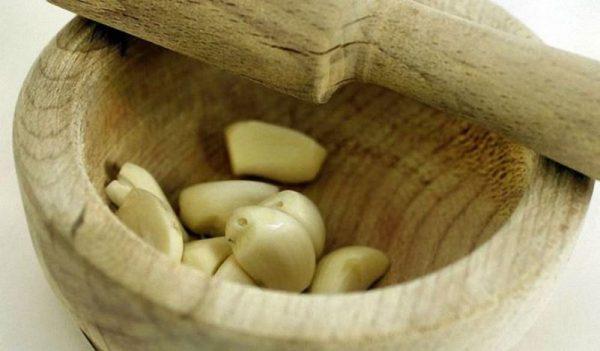
Garlic is widely used in medicine due to its antiseptic effect.
Garlic infusion for the steam room is prepared several hours before use:
- The garlic bulb is peeled and grated. It is allowed to chop finely, then you don’t have to clean the cloves, the husk will also release useful substances along with the steam.
- Chopped garlic is poured with boiled water, cooled to 85˚C and left for several hours (you can leave it in a thermos overnight).
- The tincture is filtered.
- Before use, prepare a solution of 6–8 liters from the tincture.
- To ensure that the steam room has a garlic aroma without any burning smell, the stones are first poured with boiling water, then immediately with garlic tincture and again with boiling water.
- Breathe medicinal steam.
The garlic solution can be made more concentrated. In this case, it is not poured onto the stones, but sprayed with a spray bottle or a broom on the walls and ceiling.
When used in a bath, the medicinal components of garlic penetrate into the blood through the mucous membranes, and their effect begins immediately after using the tincture.
How to prepare a plant?
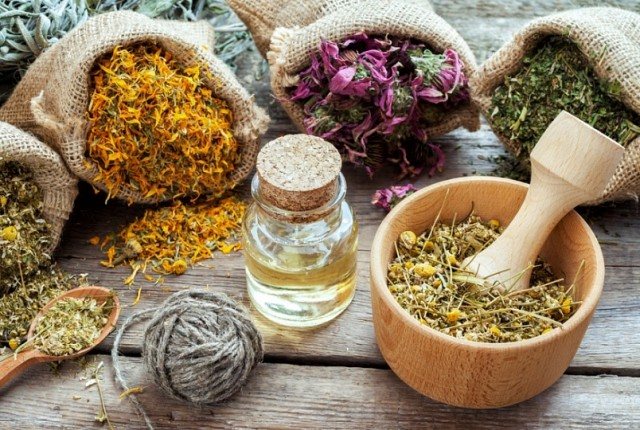
It is best to use fresh leaves for a bath. Prepare them 2-3 hours before the steam room. Just wash the plant under running water and dry on napkins.
In winter, when steam rooms are visited at the highest level, it is difficult to find fresh horseradish leaves. No problem, the root will also work. You can prepare it in the summer. Take horseradish root, wash thoroughly and peel off the top layer. For the bath, the root should be thinly sliced, preferably into strips. Dry the plant, wrap it in newspaper and put it in a dark place. Dried roots do not spoil, so they can be used 1-2 years after stocks were made.
Most often, horseradish is used as a means to flavor water in the steam room. Fresh leaves should be poured with hot water and left for about 30 minutes. Afterwards, the product must be strained through cheesecloth so that parts of the plant do not get into the infusion. The resulting water should be periodically poured onto the hot stones so that the aroma of horseradish constantly lingers in the steam room.
You can prepare an infusion from dried roots. Just keep them in hot water for at least 60 minutes, and preferably 2-3 hours. If your eyes become very watery while in the steam room, it means the infusion is overly concentrated. Just dilute it with warm water and continue using.
There is one common and ancient recipe that allows you to get a good medicinal decoction that will not irritate your eyes. For 4 liters of water, take 2 roots and 1 leaf of horseradish, boil and cook for about half an hour. Then the broth should be cooled, add 2 tablespoons of fireweed and 1 teaspoon of honey.
Despite the fact that horseradish is quite aggressive, the last recipe is useful even for children (if there are no general contraindications to visiting the steam room). The smell is soft and pleasant, does not hurt the eyes and does not cause irritation.
Also, flavored water for the steam room can be prepared based on several plants. Take horseradish, mint, thyme and eucalyptus. Pour boiling water over and steam for about half an hour. Strain the resulting broth and use for a bath.
We invite you to familiarize yourself with a bathhouse made of profiled timber - do it yourself, building a bathhouse, features of profiled timber
Bath with garlic and onions
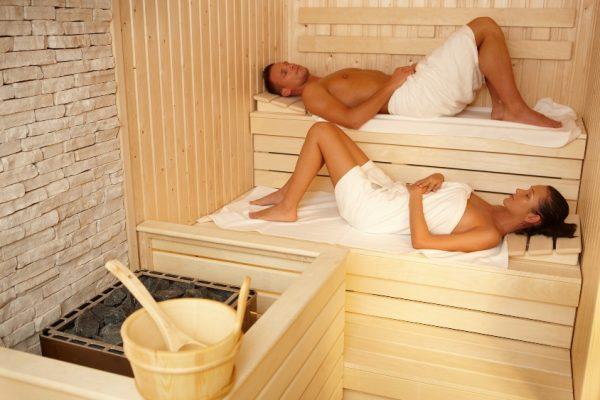
Garlic steam has an unrecognizable aroma in the bath
Onions, like garlic, are rich in phytoncides, so they help fight bacterial infections. A decoction for a bath is not made from onions. It is finely chopped and placed on the bath shelf in a plate. You can eat a few pieces of onion in a heated bath. When combined with garlic steam, it has a significant healing effect.
Video: garlic bath
Any aromatherapy in a bath should be approached responsibly. Onion and garlic steam will be beneficial if you inhale it for about 10 minutes. For a person with an allergy to essential oils of plants, such procedures are generally contraindicated.
Garlic…
Chinese scientists from the National Center for Disease Control of Qiangsu Province found that garlic halves the risk of developing lung cancer in a person, even though he smokes. Scientists came to this conclusion after surveying 1.5 thousand cancer patients and 4.5 thousand healthy people. During the survey, volunteers were asked about their diet, bad habits and daily routine. The results showed that participants who consumed garlic at least twice a week had half the risk of developing lung cancer (44%). It turned out that even if the subjects smoked, the effect was still present in 30% of cases. However, it is not yet known whether garlic will retain the same beneficial properties after heat treatment and other types of preparation.
Garlic in the bath
Garlic in a bath, despite its “harshness,” is very appropriate. If we are talking about a bath for health. Of course, it is better to use garlic in a bath only in a family bath, since in a public bath your action will be misinterpreted. For what purpose is cheskok used? Firstly, to maintain good health. Garlic has always been considered a universal remedy that cures everything from colds to plague. It is an excellent source of manganese, vitamin B6, vitamin C and selenium. Garlic has properties that help our heart and liver: 1. good for blood and circulation 2. helps stimulate the immune system 3. helps reduce “bad” cholesterol 4. increases metabolism 5. helps better absorb iron 6. serves as a cancer prevention (includes in the top 10 best anti-cancer products) 7. fights bacteria and viruses 8. helps remove warts 9. treats toothache. Secondly, as a remedy: 1. For colds. Chop a clove of garlic and add a little hot water. Let sit for 5 minutes. Strain and drink the decoction. This is a natural cough syrup. During cold and flu season, eat 3 raw garlic cloves daily to prevent illness. 2. For acne. Cut a clove of garlic in half and rub over the affected areas of the skin. Carry out the procedure regularly and your skin will become clear. 3. About herpes. Cut a clove of garlic in half and rub on the sore area. This may cause discomfort, but it is as effective as expensive pharmaceutical products. 4. Treatment for foot fungus. Throw a couple of crushed garlic cloves into hot water. Let it brew a little. Pour the resulting liquid into a foot bath and soak your feet for half an hour. Thirdly, as a drug for controlling insects indoors and even garden pests: 1. Using a garlic-based soap spray gives good results in the fight against gypsy moths, which infect apple trees. It's quick and easy to make, it's economical, non-toxic to the environment and our bodies - and it works! Soap has been used for centuries as a universal pesticide. It destroys insect cell membranes and kills pests. The trick is not to use too much of it, otherwise it will kill the plant along with the pests. Grate the laundry soap and add water to obtain concentrated liquid soap. To prepare the solution, take 1-2 tablespoons of liquid soap per 1 liter of water. Chop 1-2 cloves of garlic and add boiling water. Cover and let sit overnight. Strain in the morning. Pour soap and garlic solutions into a spray bottle. In dry weather, treat the plants. The solution deteriorates quickly, so you need to prepare it as needed. 2. Repellent against mosquitoes and other insects. Everyone knows that the best remedy for vampires is garlic. That's why mosquitoes are afraid of garlic. You can rub garlic on your skin to repel mosquitoes, but if that's not your thing, you can place peeled garlic cloves where the mosquitoes have appeared. Fourthly, as a household product. 1. Glass repair. If small cracks appear on the glass, you can squeeze garlic juice onto it. After some time, you need to wipe off the excess wax. Garlic is a natural glue. It will help glue the fragments together and prevent further damage. 2. Glue. Garlic can be used to glue other materials, such as paper. 3. Fighting ice. Garlic salt works wonders for removing ice from roads, sidewalks, and other surfaces. 4. Homemade surface cleaner. Chop 3-4 cloves of garlic. Place them in a spray bottle filled with white vinegar. Add a couple of drops of lemon oil and the sanitizer is ready!
Add a comment Cancel reply
This site uses Akismet to reduce spam. Find out how your comment data is processed.
—Categories
- Knitting (23)
- Psychology (9)
- All about the bath (5)
- Music, lyrics (4)
- Conscious Parenting (2)
- Psychosomatics (1)
- Interior design (1)
- A propos de France (1)
- Handicrafts (0)
- Women's stories (0)
- Cooking (0)
-Music
—Search by diary
—Subscription by e-mail
— Regular readers
-Statistics
Monday, November 07, 2011 16:37 + to quote book
Decoctions in a Russian bath are needed no less than a proper broom! A broom is a tool, a decoction is a medicine!
“I spent about a year steaming in a Russian bathhouse, where my herbalist friends gathered. These were grandmothers who looked about 80-90 years old each. In the villages they were not embarrassed to be called witches, they were afraid of them, but when pressure came, they ran to them for help. And how many times have I noticed that a man is ill, and their wives are running to the herbalists. The men were afraid of them like fire. And the grandmothers were very nice - three such nice grandmothers with interesting eyes.
Their entire room was hung with herbs that exuded a unique aroma. I have been to modern “herbal” pharmacies - they “rush” with medicines, but those grandmothers had just the aroma!
And after one visit, leaving the steam room, I turned to one grandmother for help, I asked boldly - my great-grandmother was the same. The problem was that due to my work I was unable to get enough sleep, and as a result I suffered terribly. So I asked for a herbal decoction to help me relax. True, when asked by the herbalist grandmother - “why do you need it?”, he joked foolishly - “they don’t let you sleep.” And these three girlfriends made me a stronger decoction. The herbal infusion resembles tea, but with an indescribable aroma and taste. As a result, after about twenty minutes I was simply dozing while walking. I vaguely remember the hour and a half that we drove to the location, and at the evening check-in, I confess honestly, I slept without my hind legs. They were able to wake me up only at eight in the morning the next day. But I felt as if the battery had been changed!
The next time we arrived at a Russian bathhouse, I asked for a smaller “dose.” And my grandmother said with a grin, “You said it yourself, they don’t let you sleep. Why are you complaining now? As a result, after a couple of trips to the bathhouse and my tea with the herbalists, most of my colleagues who traveled with us drank at the herbalists. True, I and another boy had to take it - the rest were afraid of these sweet grandmothers. But everyone drank the decoctions and enjoyed it! And while they drank, they didn’t get sick. They didn’t even suffer from stomach pain.”
Now imagine how such a decoction works if it does not dissolve in the stomach, but enters through the respiratory tract almost directly into the blood. The effect is simply amazing.
And to help you, I will share several recipes for such decoctions.
First of all, the decoction should be pleasant - it’s all a lie that the medicine should be tasteless! In my opinion, the most pleasant aromas are bread. The taste of fresh, freshly baked bread is intoxicating better than any perfume! To achieve this smell, you need to splash homemade kvass or beer on the stones.
If you need to cheer up, you can splash a little coffee on the stones. But don't overdo it!
IMPORTANT!
Only “light” steam is useful - when a little water or broth is splashed onto the heated stones. Adding the decoction to the stones should be done in the following order and the faster the better:
- warm water
- decoction
- warm water with kvass or beer
If you pour the broth, you will immediately understand that a burnt smell will appear. This means there was a lot of broth. Smells should be light!
Decoctions can be either simple or complex. Simple decoctions include kvass and beer. Simple herbal decoctions include decoctions consisting of one plant:
- eucalyptus. A unique plant - an amazing antiseptic. As a decoction, you can use a simple eucalyptus tincture from the pharmacy.
- mint. Soothes very well.
- linden flowers.
- thyme.
- oregano
- St. John's wort.
- coltsfoot.
- pharmaceutical chamomile.
- sage
Herbs for the bath: the healing power of nature
If we talk about what herbs are brewed in a bathhouse, the choice is huge: each of them has its own unique properties, so anyone can choose herbal infusions based on their preferences. Also, do not forget about a possible allergic reaction; if you are allergic to any herb, then, of course, you cannot add it.
Below we will look at the most popular herbs in Russia and talk about their properties.
Chamomile in the bath
The flowers of this wildflower contain large amounts of vitamin C and carotene; this composition helps strengthen the immune system and helps fight infections.
Chamomile is great if you want to relax well and cure respiratory problems. It is especially recommended to choose chamomile infusion during cold and flu seasons.
Mint in the sauna
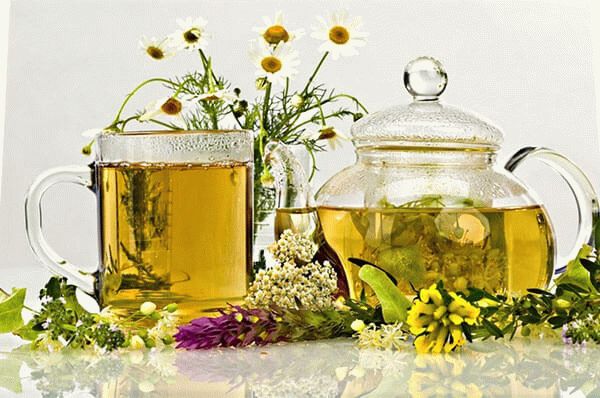
Mint is one of the most popular types of herbs used in saunas. It has an excellent cooling and refreshing effect and an incredibly pleasant aroma, which will make bathing procedures even more enjoyable.
Menthol contained in mint improves brain activity and helps relieve headaches. In addition, it has a strong antiseptic effect and increases airway patency.
If you notice the first signs of a cold, then use a mint-based infusion, it will help prevent the development of the disease.
Wormwood for baths
Wormwood contains amino acids, minerals, potassium salts, vitamins A, B, C, etc. It contains essential oils that help reduce headaches, stimulate memory and increase performance. Wormwood has a positive effect on the nervous system, it helps to relax, relieve emotional stress and forget about stress.
If you have had a busy work week, have a headache all the time, and find it difficult to concentrate, then make a decoction with wormwood, it will help you relax and put your thoughts in order.
Sage for bath
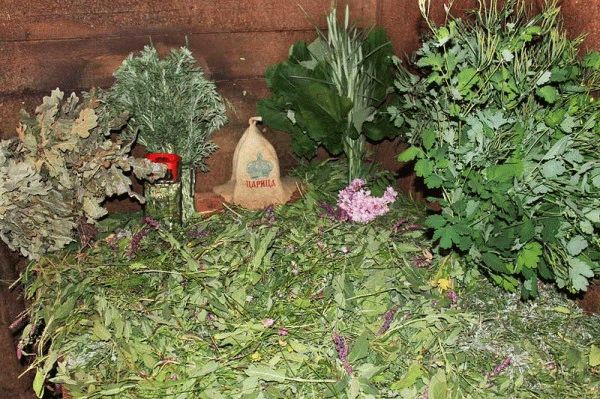
Sage is classified as a disinfectant infusion. It kills bacteria in the room, steam with the aroma of this plant will help in the fight against lung diseases - it effectively destroys viruses in the upper respiratory tract.
Sage contains substances that can normalize the functioning of the sebaceous glands, making the skin less oily.
Sweet clover in the bathhouse
An infusion of sweet clover will provide a wonderful aroma in the steam room. The plant promotes complete relaxation, it helps in the fight against stress and neuroses; sweet clover has a healing effect on the nervous system.
And if you apply a warm bag of this herb to your body, it will help relieve joint pain.
Linden in the bathhouse
Linden infusion is a wonderful remedy against colds. It stimulates sweating and helps remove waste and toxins from the body. Linden aroma increases tone and relieves tension.
Linden steaming is actively used by women for cosmetic purposes: it helps remove cellulite, improve skin tone, and slow down the aging process.
St. John's wort in the bath
St. John's wort contains phytoncides, thanks to which it has a strong antiviral effect.
St. John's wort has a light and unobtrusive aroma, so it goes well with other plants. It is recommended to combine it with various herbs when preparing a steaming bath with your own hands, for example, with sage or eucalyptus.
Bath with garlic
Garlic has a high content of phytoncides, antioxidants and vitamins. Garlic infusion steam helps in the fight against all kinds of infections and improves immunity. Garlic is also useful because it strengthens blood vessels, lowers cholesterol levels and speeds up metabolism.
Hops for sauna
The smell of hops has a strong tonic effect. A decoction of hops fills you with energy, improves your mood, and increases your performance. It is recommended to use it if you plan to do some business after visiting the bathhouse.
Horseradish for bath
Horseradish will help not only in treating colds, but also in strengthening the body, it will increase immunity and help protect you from ARVI and flu.
The tart smell of horseradish perfectly tones, fills with energy and increases performance.
To enhance the healing effect of visiting the steam room, many use medicinal herbs for the bath: by collecting and drying the plants with our own hands, we obtain a material that is unique in its properties.
Even if you focus on those species that grow only in our area, you can put together a good green first aid kit. Well, there are many ways to use these herbs, and we will talk about the most popular ones in the article below.
You can actively use natural medicines in the steam room
First of all, we need to decide which medicinal plants deserve our attention. Here various medical reference books on the therapeutic and preventive properties of herbs will come to our aid.
The most commonly used types in the bath include:
- Mint (peppermint and field mint) is one of the most popular herbs during bath procedures. Used for steaming and decoctions, added to herbal teas. Since mint contains a significant amount of menthol, the steam obtained from the evaporation of its decoctions and infusions stimulates brain activity, increases airway patency, and has an antiseptic effect.
- The high content of carotene and ascorbic acid (vitamin C) in chamomile flowers has a positive effect on immunity and suppression of infectious diseases. Steaming decoctions and teas are used in the treatment of diseases of the respiratory system, as well as for general relaxation of the body.
- St. John's wort - goes well in parks with other herbs. Due to the content of natural antibacterial components, it has a powerful antiseptic effect.
- Wormwood for baths is used both for preparing decoctions and as a component of brooms. The effects of essential oils contained in the stems and leaves help reduce headaches, increase efficiency, stimulate memory, etc.
- Linden is an excellent remedy for insomnia. Also, steamed linden blossom significantly increases sweating, so for those who want to lose weight, we can safely recommend this plant.
- But hops, on the contrary, are a powerful stimulant. Let's add a few hop shoots to the bath broom, brew the pine cones in the steamer - and within an hour of leaving the steam room you can safely take on any work.
Photo of hop cones
This property of hops is often used by athletes during training.
In addition to these plants, you can also use horseradish (used for compresses), black currant, spruce, pine or fir needles, valerian, yarrow... It’s probably impossible to list all the herbs.
As was said at the beginning, it is best to collect the herbs yourself. However, if you cannot find the plant you need, you can always buy it at the pharmacy - fortunately, the price of medicinal raw materials is quite affordable.
Using Herbs
A herbal bath involves the use of medicinal plants in a variety of forms. And the most commonly used form is steaming. Steaming is a decoction or infusion of herbs designed to produce water vapor with suspended substances. We pour the steaming mixture prepared in advance in small portions onto the heater of the bathhouse, where it evaporates almost instantly.
Preparing herbal decoction
The cooking instructions are as follows:
- Grind all the ingredients of the steaming into fragments no larger than 10 mm in size.
For cooking, we use exclusively whole leaves and stems, without signs of rotting, damage by insects, etc.
- We mix the herbs in the required proportions (we will give several recipes below), after which we place the resulting mixture in an enamel container.
- Fill the plants with boiling water (1.5 - 2 l), put on fire and bring to a boil. After boiling, close the lid and simmer over low heat for about an hour.
- The resulting broth is filtered and, after cooling, stored in a cool, dark place. Experts recommend preparing steaming for no more than one and a half to two months.
Pour the parka onto the stones
For use in a steam room, you can use several compositions:
- Bactericidal, including equal volumes of mint, thyme, eucalyptus and sage. You should use this decoction the first time you enter the steam room, since the resulting steam does an excellent job of disinfecting steamed skin. Yes, and essential oils in the air have an extremely positive effect.
- Relaxing – mint, chamomile, thyme, spruce needles, chamomile (1 part each). The use of such a steamer will be especially useful for heavy smokers, as well as for those who are trying to break this bad habit. The calming effect of steam makes withdrawal symptoms much easier to bear.
- Toning - helps to gain strength. For the decoction, tansy flowers, bison, poplar buds, etc. are used. The use of this decoction is recommended primarily for those who experience weakness when visiting a steam room. Also, to enhance the tonic effect, you should add lavender or jasmine to the composition.
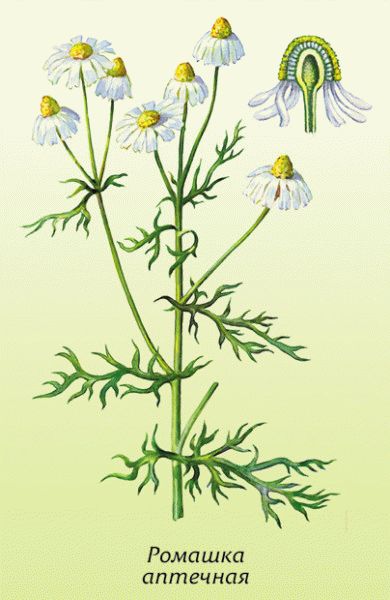
Herbal teas
In addition to steaming, you can also use herbal teas for baths. In fact, they do not contain the tea leaf at all, so they are decoctions of medicinal herbs.
The most common recipes include:
- Lingonberry tea - infusion of 1 spoon of dry lingonberry leaf in a glass of boiling water. It has a diuretic effect, and together with honey it helps against colds.
- Cranberry tea - mash berries (fresh or frozen) with sugar and pour boiling water. The resulting infusion has an antipyretic effect and also stimulates appetite.
- St. John's wort decoction - pour a teaspoon of boiling water and leave for about half an hour. The taste is not for everyone, but this tea normalizes intestinal function and has an antiseptic effect.
Black currant leaves, mint, rose hips, thyme, etc. are also used for drinking decoctions.
Using decoctions to obtain healing steam, as well as herbal tea for the bath, we will greatly increase the effectiveness of visiting the steam room. The main thing here is to choose the right composition of medicinal plants, because certain varieties produce different effects, and in some cases may not only not help, but also seriously worsen the condition.
How to prepare a decoction for a Russian bath?
Preparing a decoction is not difficult:
- take enamel cookware
- fill with water and put on fire. Water is considered to boil when the first bubbles appear
- add the collection to the water
- When the infusion boils, reduce the heat to low and keep the infusion on low heat for one hour.
- Turn off the heat and, without removing the lid, cool the broth.
- pour the broth through a cloth into dark glass bottles, seal tightly with a lid and place in a cool, dark place.
IMPORTANT!
Prepare the decoction yourself! No need to let strangers near him.
How to make a fragrant and pleasant smell in a bath: essential oils, herbal infusions and flavorings
The bathhouse is a place for healing and relaxing procedures.
The unique properties of the steam room have been known for a long time - rapid warming up of the body, strengthening the immune system, fighting various diseases. Many bathhouse attendants are interested in a very pressing question - how to make a pleasant smell in the bathhouse in order to relax with benefit for the soul and body?
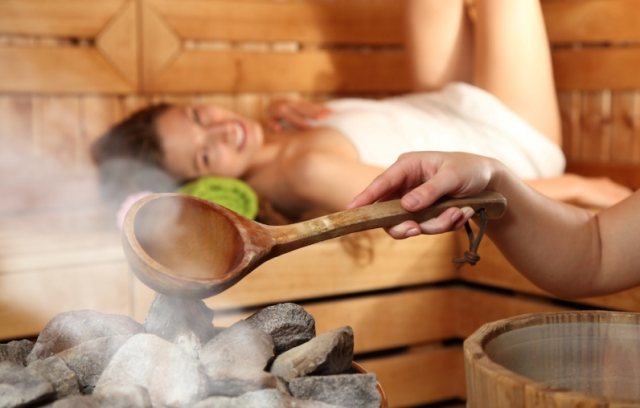
The simplest and most affordable method of aromatherapy for a bath is to use essential oils, herbal mixtures and tinctures. It is very important to adhere to a strict dosage and use them correctly without harm to human health.
Beneficial features
Horseradish contains many useful components, and is also accessible to everyone. You no longer need to go to the pharmacy for essential oils; you just need to go to the garden or to the market for horseradish. Firstly, the plant is a powerful antiseptic and is simply irreplaceable during colds and flu. Secondly, horseradish contains a lot of vitamins and minerals, which when heated become active and easily penetrate the body. Thus, using horseradish products in a bath will eliminate a runny nose, prevent the onset of influenza and cure seasonal hypovitaminosis.
The pleasant smell in the bathhouse lifts your mood, improves your overall well-being, and relaxes you. The vitamin C contained in the plant triggers the body's antioxidant systems, promoting the elimination of toxins. The steam room, in turn, activates the excretory system, improving the removal of those same toxins.
A horseradish bath will be very useful for people with skin diseases, such as psoriasis. Any inflammation on the skin causes a breakdown of the barrier and provokes the growth of pathogens. Horseradish, as a powerful antiseptic, gets onto the skin along with the steam, disinfecting it. This will be a fairly mild effect because the same bath with horseradish may be contraindicated for patients with psoriasis.
Natural essential oils
Aromatherapy in baths and saunas has a beneficial effect on all systems of the human body. Soft and clean steam containing aromatic oils helps prevent and treat various respiratory diseases.
Natural aromatic oils effectively saturate the bath air with beneficial compounds that actively penetrate the human body through the respiratory system and skin.
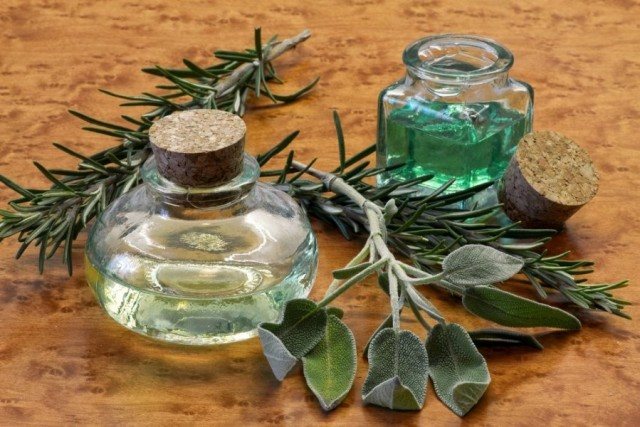
Essential oils in baths and saunas have the following beneficial characteristics:
They have metabolic, trophic, secretory, training and diaphoretic effects. Used for inhalation, massage, rubbing and baths.
Oils for saunas and baths, depending on their composition, can have a comprehensive healing effect on the body.
- Juniper, anise and dill oils are used for coughs and congestion in the upper respiratory tract.
- Eucalyptus and peppermint oils have a powerful antiseptic effect, so they are used for colds.
- To treat headaches and normalize blood pressure, it is better to use verbena and geranium oil.
- For muscle and emotional stress, you can use geranium, wormwood and lemongrass oil.
- If you lack strength and are tired, it is better to choose rosemary and rose oil.
- To treat skin diseases, it is recommended to use sedative and wound-healing essential oils for baths and saunas - chamomile, sage, valerian, sea buckthorn and pine. In addition, such oils tone and increase skin elasticity.
- Coniferous oil for saunas and baths - spruce, pine, fir and cedar - has a powerful antibacterial and anti-inflammatory effect. Such oils are best used as quick septic tanks for healing damaged skin.
- Air saturated with aromatic oils promotes detoxification and cleansing of the body. The best natural flavors for a bath are lemon, sandalwood and juniper oils.
Herbal infusions and teas
No less popular is the herbal bath - the use of aromatic herbs for the preparation of medicinal infusions and steaming.
Bath infusions have a pleasant aroma, which is enough to quickly saturate the air in the steam room. During the process of herbal inhalation, beneficial compounds penetrate through the upper respiratory tract and are carried along with the blood to all systems of the body.
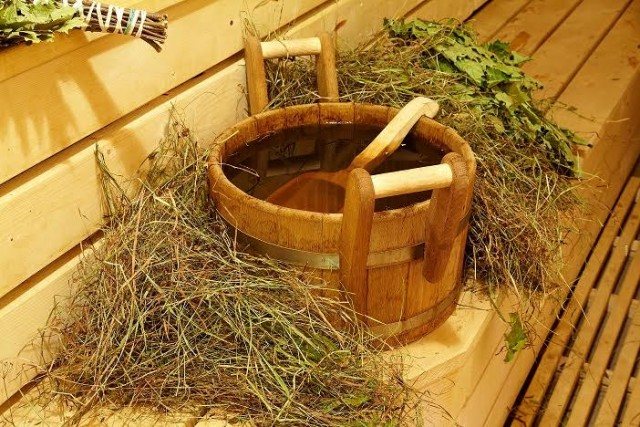
What plants can be used to prepare medicinal infusions and teas? Since bath herbs have the same powerful effect on the body as medications, they are therefore widely used for preventive and therapeutic purposes during bath procedures.
In order for bath infusions to be beneficial and provide a high therapeutic effect, you need to know in what cases each type of plant can be used.
- Antiseptic and anti-inflammatory effects - chamomile, eucalyptus, calendula, oak bark, sage, linden.
- Sedative and calming effect - mint, lemon balm, chamomile, linden, lemongrass.
- Normalization of blood pressure - hawthorn and motherwort.
- Tonic effect - wormwood, juniper and rose.
- Relieving nervous tension and fatigue - pine, fir, juniper, eucalyptus, thyme.
- Anti-cold and expectorant - eucalyptus, lavender, linden, thyme, sweet clover.
- Accelerate metabolism, strengthen the immune system, detoxify the body - lavender, chamomile, mint.
To get the maximum effect from bath procedures, it is recommended to use fresh herbal infusions and bath steams. Steaming for a bath based on medicinal plants is sold ready-made at the pharmacy - small canvas bags containing the required set of herbs. If desired, you can make this decoction yourself.
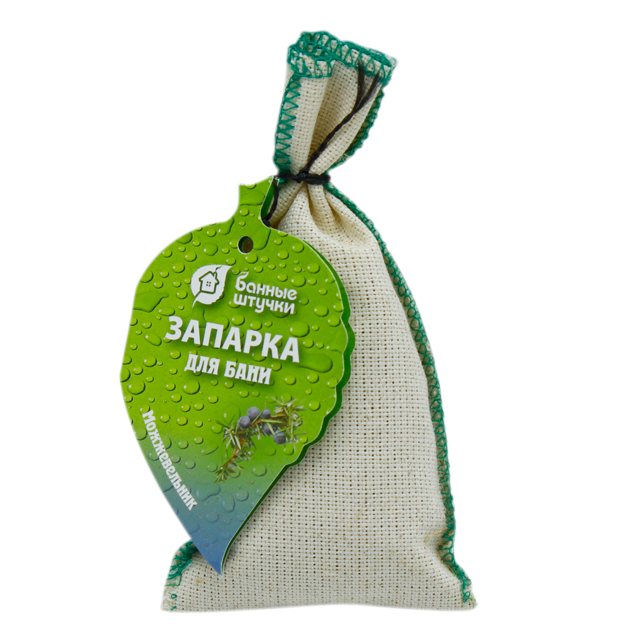
To prepare a decoction for a bath with your own hands, you should first buy medicinal herbs at your discretion. We brew the decoction according to the recipe strictly in compliance with the proportions proposed by the manufacturer.
When performing bath procedures, it is not recommended to use alcohol tinctures to avoid drying out the mucous membrane.
Video lesson: how to choose herbs for making tea and infusion
The herb for the bath is selected taking into account the characteristics of its action.
As a rule, medicinal herbs are used, from which craftsmen prepare steaming for the bath, even with their own hands. The most popular in our country are:
- Sagebrush. Wormwood decoction vapors have a strong antimicrobial effect, so wormwood-based sauna steaming is used in the fight against colds, chronic diseases of the respiratory system and ENT organs, and other infections. It is believed that the aroma of wormwood increases performance, physical endurance, improves concentration and memory, helps to collect thoughts and make difficult decisions. It is used as a natural immunomodulator and regulator of digestive processes.
- Mint. Our ancestors believed that the aroma of mint clears the mind and helps thought processes. It treats colds, relieves cramps and headaches, helps cope with nausea and general malaise.
- Melissa. A recognized remedy in the fight against physical fatigue, tension and pain in muscles, joints, and back. Helps relieve itching after bites of blood-sucking insects, relaxes, soothes and puts you in a peaceful mood. Normalizes sleep, but at the same time eliminates increased drowsiness.
- St. John's wort. Contains phytoncides that have antiviral and antimicrobial effects. When steamed, they are released into the air and enter the body with breathing. It has an antidepressant effect, helps relieve pain and inflammation, improve skin condition and get rid of various rashes.
- Chamomile. The most affordable and popular plant. It is famous for its disinfectant, anti-inflammatory, soothing and wound-healing properties. Its aroma helps to calm down, get rid of stress, and relax after a hard day.
- Hop. At first, its aroma has a strong relaxing effect; it is not for nothing that a person who has lost control over emotions, movements and feelings is said to be “tipsy.” But this is a temporary effect. After visiting a steam room with a hop brew, a feeling of vigor appears, your mood improves, and your overall vitality rises.
- Linden. One of the best remedies for treating diseases of the respiratory system and cleansing the body of metabolic products (“toxins”). It has a pronounced diaphoretic effect, which is enhanced in the bath due to high temperature and steam pressure. With sweat, excess intercellular fluid comes out, swelling is relieved, and unnecessary and often toxic substances are removed. Linden steaming is widely used for cosmetic purposes - it helps fight excess weight and cellulite, improves skin condition, removes bags under the eyes, and makes age-related changes less noticeable.
- Yarrow. Contains many biologically active substances (essential oils of flavones, alkaloids, resins), due to which it has anti-inflammatory and antimicrobial effects, improves appetite and normalizes digestion. This plant contains valeric acid, which helps normalize sleep, relieve psycho-emotional stress, and eliminate anxiety and stress.
- Horseradish. It’s hard to imagine, but this plant is also widely used to prepare steaming for baths. Anyone who has managed to take root in their garden can prepare it with their own hands. The tart aroma of horseradish tones well, increases performance, and helps cope with any infections and colds.
- Black currant. To prepare steaming, its leaves are used, which are preferably collected at the beginning of summer, when the concentration of biologically active substances in them is maximum and toxins are insignificant. The aroma of black currant and the flavonoids it contains helps relieve tension, get rid of stress, improves mood and puts you in a positive mood.
We suggest you familiarize yourself with what kind of permit is needed to build a bathhouse on your own site - rules and regulations.
By combining herbs with each other, various preparations are prepared. For a bath, you can use a combination of any of the listed herbs - they are all in harmony with each other.
Important! Be sure to familiarize yourself with the effects of herbs, indications and contraindications before using them in a bath. You need to be careful when using herbs if you are prone to allergic reactions.
Aromatic plants and bath brooms
Aromatic plants and bath brooms can create a favorable atmosphere and aromas for a bath.
To create aromatic and pleasant steam during the construction of baths, special tree species with a high content of aromatic substances are used. Thus, pine needles are used for the frame, linden and aspen are used for interior decoration, and cedar or oak are used for decorative elements.
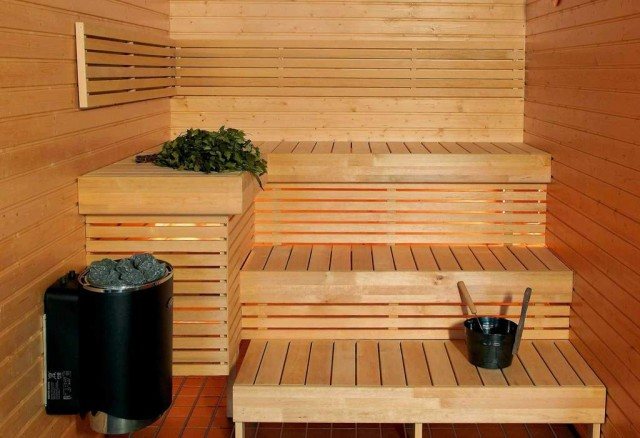
To create a cozy and healthy microclimate in the finished room, fresh or dried herbs and plants can be used, scattered on the floor, laid out on floor beams or hung on the walls. The best choice for a bath is herbs harvested with your own hands in ecologically clean regions.
For example, birch and pine branches, linden leaves and wormwood for a bath can saturate the steam with a soft and unique aroma, improve well-being and lift your mood.

Walls and ceiling surfaces can be sprinkled with pine tincture for disinfection and relaxation. Plants placed on the floor help heal microcracks in the heels, improve blood circulation and relieve fatigue in the legs.
Bath brooms
It’s hard to imagine a Russian steam room without a traditional attribute – a bath broom made from aromatic herbs. A natural bath broom provides an intense massage, warming up the muscle corset, improving blood circulation and a pleasant aroma.
Bath brooms are made from birch and oak branches, and in rare cases, spruce branches. Since ancient times, brooms made from birch branches have been used in steam rooms. They are distinguished by a high content of tanning components, vitamins and persistent aromatic substances, which can remain on human skin for up to 8 hours.
Natural flavors and additives
With the right approach, you can get therapeutic steam with any aroma in the steam room by adding natural flavors and additives to the water.
The classic aroma of a bathhouse is the bready aroma exuded by kvass or beer. Such drinks are infused with bread crumb and malt. Another natural flavoring for saunas and baths is honey, which will fill the room with the amazing smell of a field apiary.
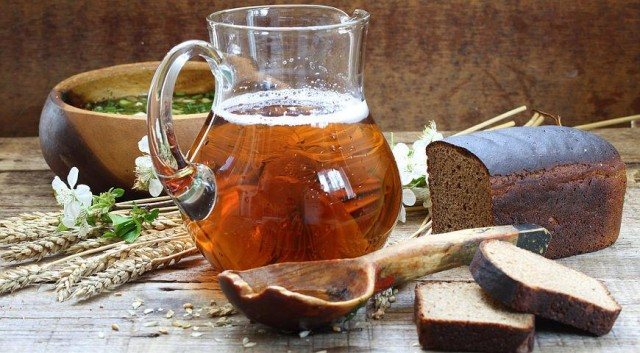
Lovers of forest walks can choose spruce or fir flavors - the steam acquires a rich aroma of pine needles. Mint and lemon balm aromas help relieve physical fatigue and stress. Exciting aromas of rose, sandalwood, ylang-ylang, orange and lemon can give vigor and confidence, lift your spirits and improve your well-being.
A good alternative to drug treatment for colds is to use mustard powder to produce medicinal steam. Some bath attendants will like the smells of melons - melon or watermelon, while others will not refuse the aroma of ripe cherries or peach.
A garlic bath is completely unusual for lovers of spicy aromas and piquancy. Garlic steam has a powerful antiseptic effect on the upper respiratory tract, so it is especially useful for colds.
Creating a fragrant atmosphere in a bathhouse is a serious and responsible process. To ensure soft steam and benefit from wellness treatments, it is important to know how to use natural oils, herbal infusions and flavors, purchased at the pharmacy or made by yourself.
Recipes for therapeutic cocktails for steam in a bath
Infusions for aromatic steam in a bathhouse are usually prepared in advance. To do this, the selected ingredients are steamed with boiling water and left for 2-3 hours in a warm place. You can make decoctions in a water bath. On average, 100 ml of dry mixture per bucket of water is enough. We invite you to familiarize yourself with several popular recipes for steam bath preparations. 1. Calming cocktail. Prepared from equal amounts of chamomile, oregano, mint, thyme, spruce needles and birch buds. 2. Antiseptic infusion. It is made from mint, eucalyptus sage and thyme. Most often used to disinfect steam rooms or for colds. 3. Energy steam. An infusion for it is prepared from two parts tansy, 1 part poplar buds and 1 part bison leaves. Useful for general fatigue. 4. Lung cocktail is useful for those who have had a cold, and also as a prevention of colds. The mixture is prepared from equal parts of linden and birch leaves with the addition of oregano and thyme. 5. An infusion for inhalation will also be useful after suffering from colds. To prepare it, you need to mix wormwood, sage, and juniper needles in equal parts. You can add linden blossom and birch foliage. If there is no time or opportunity to prepare cocktails for aromatic steam in a bathhouse, homemade infusions and decoctions can be replaced with ready-made preparations. For example, instead of pine needles, you can dilute pine extract or fir oil in water. Instead of mint, you can use menthol or even dissolve a validol tablet in water. Bath experts often use a decoction of horseradish leaves, radish juice, beets, and even garlic juice for colds. To achieve a tonic effect, use lemon juice. Potato decoction is used as a strong diaphoretic, which has a positive effect in the fight against chronic bronchitis.
Bath at the initial stage of sinusitis
Sinusitis is a very unpleasant disease when, as a result of the inflammatory process, pus accumulates in the maxillary sinuses, which is the result of the struggle of leukocytes with harmful microorganisms. The resulting pus has an extremely unpleasant putrid odor, and inflammation of the nasal mucosa leads to swelling of the airways, leading to nasal congestion.
Inflammation can be acute or chronic, but in the first stages it is easy to recognize by pressing heaviness in the maxillary sinuses, weakness, nasal congestion and copious mucous discharge.
Some people mistakenly believe that during this period it is necessary to take a steam bath in order for the disease to go away. But a steam bath is unlikely to help here. The proliferation of harmful microorganisms can only be stopped by taking medications prescribed by a doctor, including antibiotics.

In some cases, if the outflow of purulent discharge is difficult, a puncture is prescribed and the maxillary sinuses are washed with a sanitizing solution.
At this time, it is better to refrain from visiting the bathhouse and quickly consult a doctor to receive timely treatment.
What are the benefits of a Russian bath?
According to doctors, the Russian bath relieves fatigue and actively affects the function of internal organs, the cardiovascular system and metabolism in general. In the steam room, a person begins to actively sweat, an abundant release of moisture from the body occurs, which leads to its cleansing and renewal. Bath procedures help you lose excess weight and help get rid of cellulite.
From time immemorial, our ancestors treated various ailments and illnesses with the help of hot steam and a broom. It was in a heated bathhouse that it was customary to give birth, at least among peasants. Thus, the mother and baby were protected from infections, since viruses and bacteria died from high temperatures. In addition, in a warm and relaxed environment, the birth process was easier.
By the way, doctors claim that visiting a Russian steam room is beneficial for women with gynecological problems. The Russian bath alleviates the symptoms of menopause, treats complications after abortions and miscarriages, menstrual irregularities and even infertility. And it is also very beneficial for the skin. It is useful to go to the bathhouse for those who suffer from hives and various dermatitis.
Research concerning the influence of the Russian bath on the human body was also carried out by foreign scientists. Thus, Japanese researchers have found that moderate bath procedures in patients suffering from high cholesterol, hypertension, and diabetes lead to strengthening of blood vessels, lowering blood pressure and blood sugar.
Bath for the development of sinusitis
Sinusitis can be acute or chronic. In the acute form, everything is quite clear - all the symptoms, as they say, are obvious: snot, tears, pressing heaviness in the sinuses, purulent discharge, weakness, fever.
With chronic sinusitis, the course of the disease is less acute, but this does not mean that treatment should be treated less carefully.
It is the chronic course of sinusitis that is often misleading, giving hope for a quick recovery. It seems that it’s worth going to the bathhouse and warming up properly in order to heal and forget about the runny nose. But in the case of sinusitis, this can cause serious harm.
It is in a warm environment that harmful microorganisms begin to actively develop, and the lack of timely treatment only aggravates the situation.
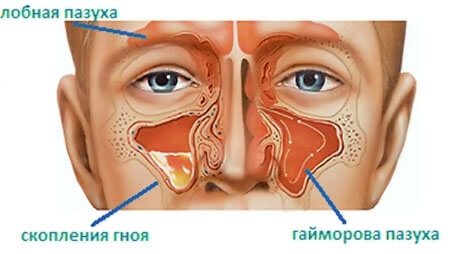
The fact that pus does not flow from the nose may not mean that there is no sinusitis. This may be an alarming signal that there are no ways for the natural outflow of pus from the sinuses and that you need to resort to flushing them through surgery.
Therefore, if you suspect sinusitis, you need to go not to the bathhouse, but to the nearest clinic, where it is possible to take a picture of the maxillary sinuses and receive timely treatment.
Difference from a regular hookah
- No nicotine . As we said earlier, a vapor cocktail is much more harmless due to the lack of nicotine in it. But it is also not completely harmless. But if you compare, smoking stones are certainly less toxic.
- No side effects . A steam cocktail does not make you smoke for the same reason - the absence of tobacco. Accordingly, it does not involve side effects in the form of headaches, nausea, migraines, tickling, coughing and other troubles that sometimes occur with tobacco hookahs.
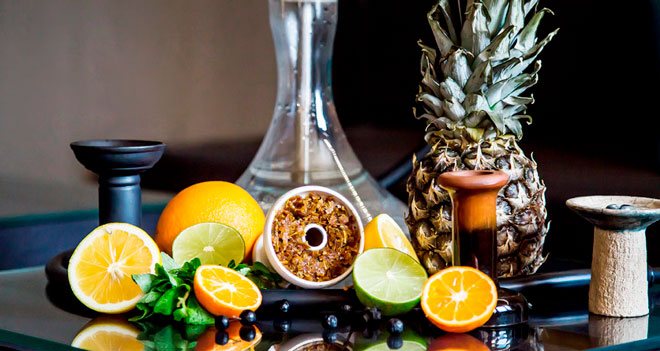
- What for? This question is asked too often in the case of steam cocktails, which is why it is also recognized as a disadvantage.


